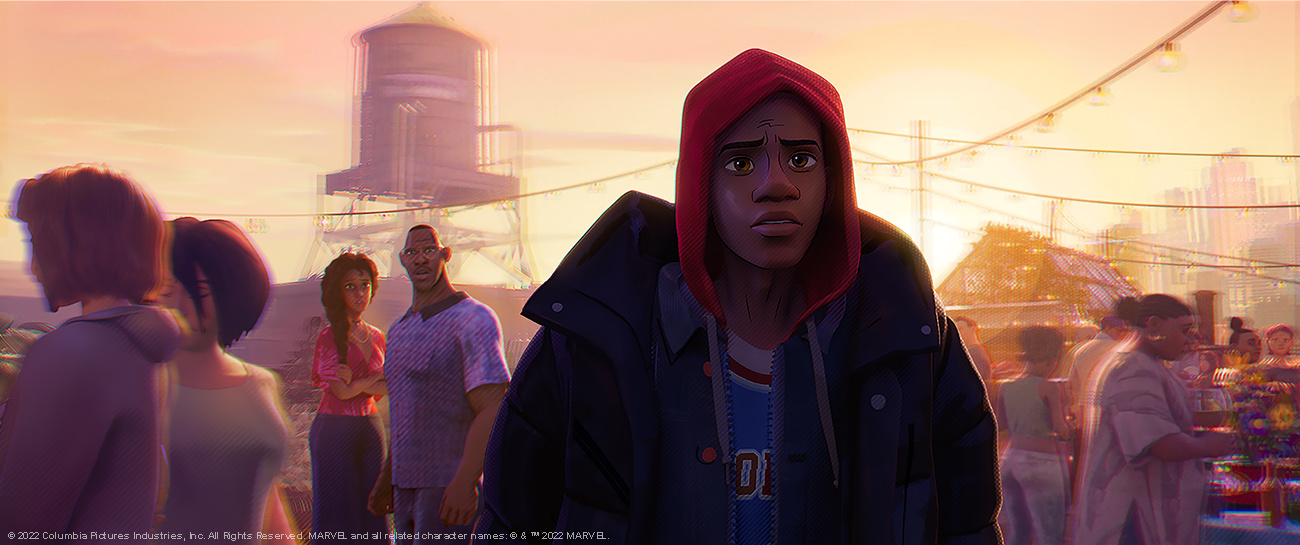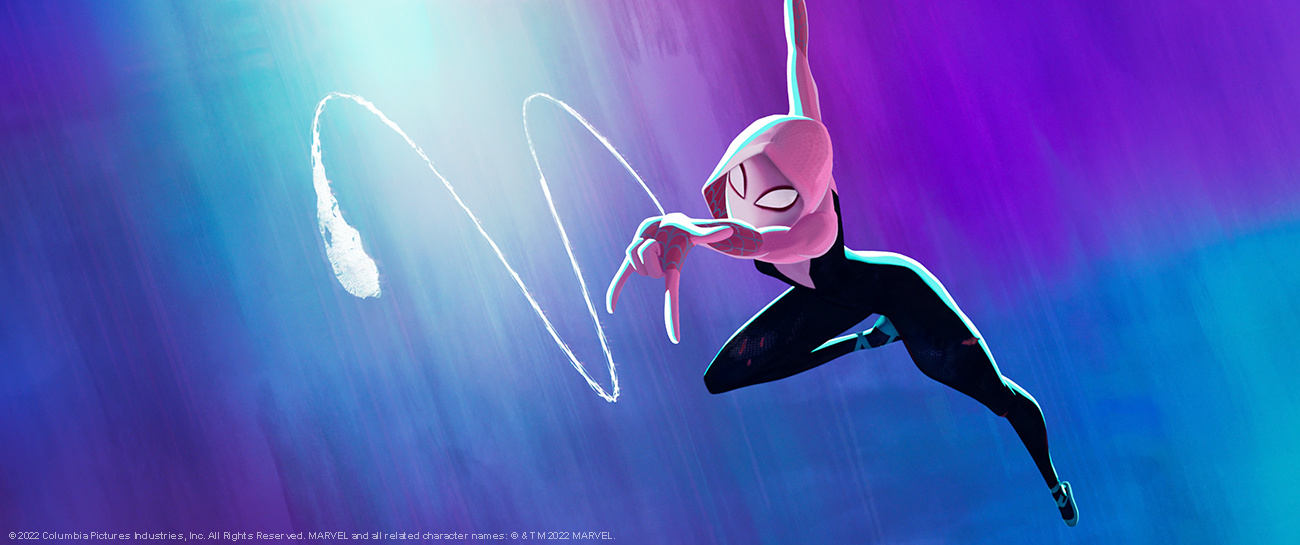Sequels naturally make me uncertain and uneasy. When a movie is as well received and beloved as Spider-Man: Into the Spider-Verse is, one has to wonder if the lightning in the bottle that made it so good will strike again. Often, sequels feel like cash grabs and fail to come close to the quality of the original. I’m happy to report that not only has lightning struck again, but there may be even more electricity in the bottle when it comes to Spider-Man: Across the Spider-Verse. This is a fantastic movie, one that gracefully balances awesome comic-book action with deep, personal character moments.
The story takes place one year and four months after the events of Into the Spider-Verse. Miles Morales is a much more confident web-slinger, but he’s also maybe a little too committed to the task of being the “one and only Spider-Man”. He’s distracted, missing classes, being late for ceremonies and otherwise struggling to juggle his two personas. And without his other web-slinging friends from the last movie, Miles feels isolated and unable to share his frustrations. Sure, Ganke knows, but he’s more content playing PlayStation in his dorm than having a heart-to-heart with Miles. This naturally results in a lot of tension with his parents, who want nothing but the best for Miles but who are in the dark as to his alter-ego.

The film features a new creative team, including directors Joaquim Dos Santos (Avatar: The Last Airbender), Kemp Powers (Soul) and Justin K. Thompson while the script comes to us from Phil Lord, Chris Miller and David Callaham. Lord and Miller also serve as producers. The first forty-five minutes or so, including a great prelude with Gwen Stacey, is heavy on character development and I think the movie is all the stronger for it. It subtly lays some foundations for the cliffhanger ending while setting up the emotional stakes that will drive Miles in the sequel. But it’s nice to spend time with Miles, the struggling genius teenager, and Gwen in her own universe, before pivoting to time with Spider-Man’s time in the multiverse.

And what a mess Spider-Man makes. Not just with getting Miles in trouble at home and school, but with the multiverse at large. I won’t go into details, but let’s just say that a complete dolt of a bad guy whom Miles treats as a “villain of the week” will have huge ramifications. What I did like is the butterfly effect set from the last movie that led to this villain’s creation, how it sets up the next movie and how it ties back to Miles. It’s a well-woven yard and the full implications of said butterfly effect will only be evident at the cliffhanger ending.

It may be cliche to say at this point, but there’s no denying it: Spider-Man: Across the Spider-Verse is a work of art. When available on digital/physical and streaming later this year, you could easily pause this movie anywhere and be met with an amazing visual feast. There are numerous, distinct animation styles throughout the film, offering bold colours, unique interpretations of emotional states and plenty of comic-book inspiration. For instance, the opening sequence featuring Gwen Stacy feels ripped straight from her own comic-book run, with pastel-heavy colours and abstract-inspired backgrounds at times. This contrasts heavily with Miles’ world and the other words visited in the Multiverse. It’s a visual feast and one that screams creative passion that makes other animation films feel creatively bankrupt as a result.

Speaking of the Multiverse, the movie handles it quite well in an era where the Multiverse is all the rage in comic-book movies. Unlike many films featuring cross-dimensional shenanigans, which maybe lean too heavily on nostalgia or the cool factor, the Multiverse here feels organic and natural while the easter eggs (oh goodness, so many easter eggs) feel like they complement the story, rather than being the main attraction. Likewise, the action feels very organic and natural in this one. One of my bigger issues with Into the Spider-Verse in hindsight is that some of the action scenes went on a little too long and popped up frequently in the latter half. But in Across the Spider-Verse, things feel more balanced and the action feels more engaging. The movie also isn’t quite as funny as its predecessor, but Miles is a bit older and a bit more confident, so this works. That said, there are still some great laughs to be had.

Miles comes across many faces in this movie, some returning (like Gwen) and many new, such as Jessica Drew and Miguel O’Hara, aka Spider-Man 2099, a vampire Spider-Man tasked with keeping the multiverse in-check. That’s as vague as I’ll keep it and don’t want to spoil other Spider-Men who pop up, but everyone gets their moment and I’m curious how things will play out in the finale, due next Spring. We don’t get too much time with the likes of Miguel and I’d very much like to get more screen time with him. But this is technically half a movie, so things like this, closure and pacing will ultimately have a larger impact once Beyond the Spider-Verse releases in March. I did find the movie felt its length towards the end a bit, but I could have also hopped straight into the next movie; who knows, maybe it was the cinema’s chair.

In the end, Across the Spider-Verse is nothing short of a piece of art. It gracefully balances character and action while setting up a big showdown in the third part. This is a fantastic movie, one that improves upon its predecessor in many respects and leaves the audience wanting more. A strong recommendation from me.

4 thoughts on “‘Spider-Man: Across the Spider-Verse’ Spoiler-Free Review – ScreenHub Entertainment”